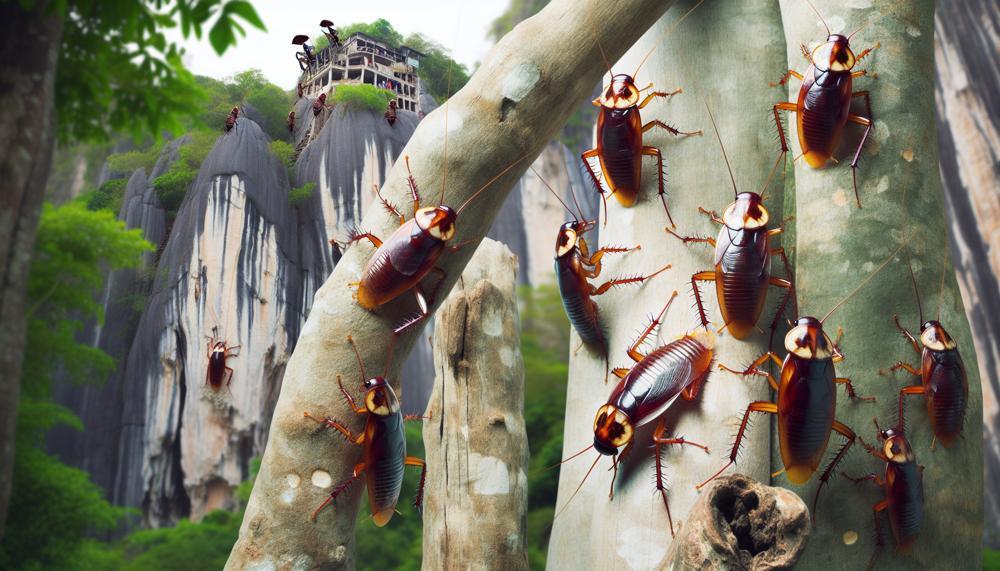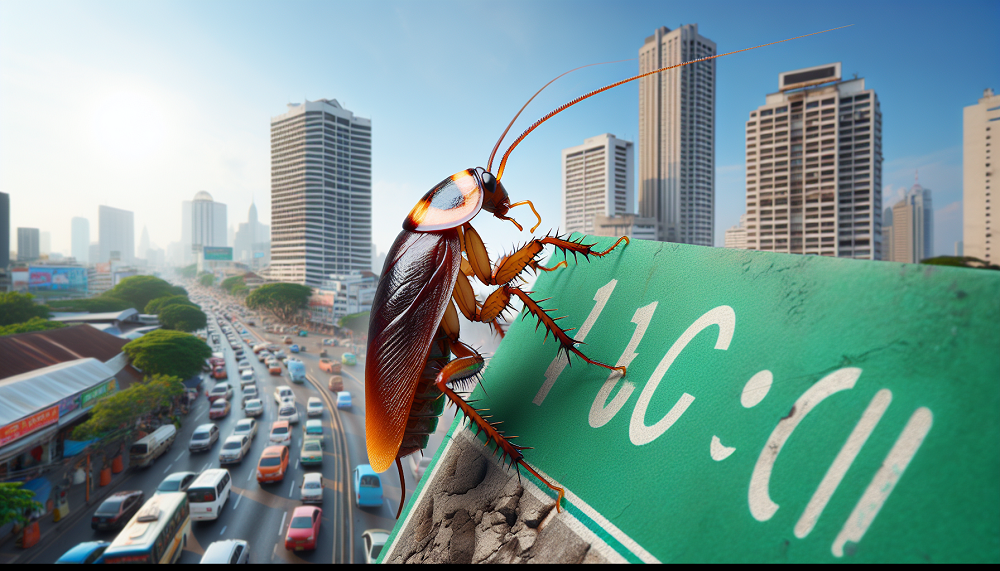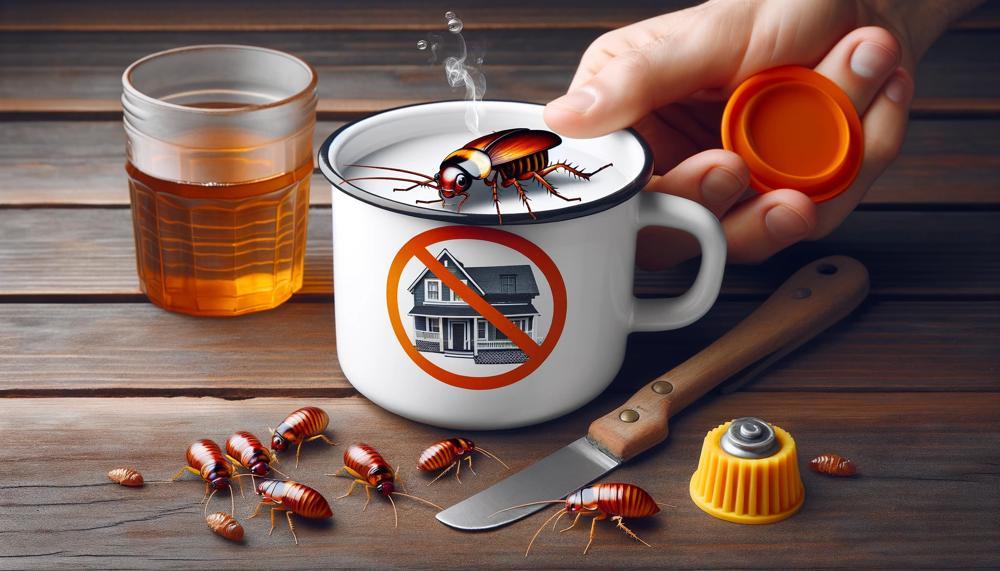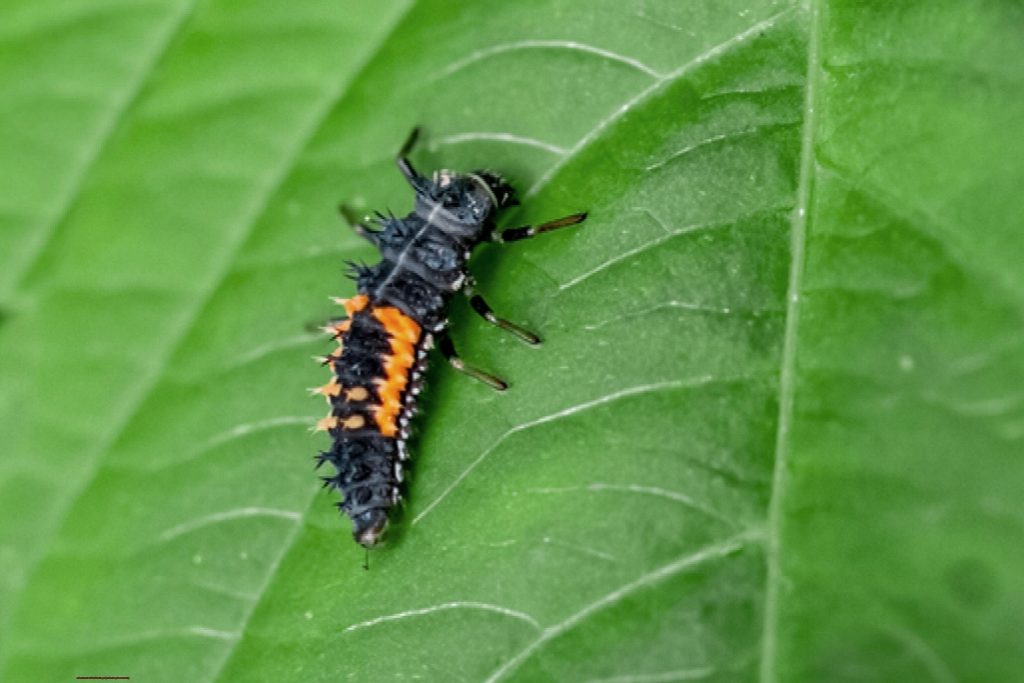Are you prepared to delve into the captivating world of cockroach climbing? Brace yourself for a mind-blowing journey as we unravel the astonishing abilities of these tiny creatures.
Despite their small size, cockroaches possess an extraordinary talent for scaling even the most challenging surfaces.
Their prowess in climbing is nothing short of remarkable, and we’re here to uncover all the fascinating details.
- Cockroaches possess the remarkable ability to climb virtually any surface, including smooth and vertical ones.
- With a combination of adhesive pads on their feet and robust muscles, they can effortlessly ascend walls and ceilings.
- This skill enables them to navigate through narrow spaces and evade predators with ease.
- Incredibly, some species can even climb upside down.
- Scientists are currently studying cockroach climbing for potential applications in robotics and medicine.
But our exploration doesn’t end there. We’ll also unveil intriguing facts about cockroaches and their climbing abilities that will leave you awestruck. So sit back, relax, and prepare to be amazed by the incredible world of cockroach climbing!
Table of Contents
- 1 Anatomy of a Cockroach: Understanding How They Climb
- 2 The Role of Suction Cups and Sharp Claws in Cockroach Climbing Abilities
- 3 How Cockroaches Use Their Flexible Exoskeleton to Maneuver Vertical Surfaces
- 4 The Waterproof Advantage: How Cockroaches Can Climb Through Wet or Slippery Surfaces
- 5 The Importance of Agility and Speed in Cockroach Climbing Skills
- 6 Survival Instincts: Why Cockroaches Will Do Anything to Find Food and Shelter
- 7 How High Can They Go?
- 8 Keeping Them Out: Tips for Preventing Cockroaches from Climbing into Your Home
- 9 Conclusion
Anatomy of a Cockroach: Understanding How They Climb
Cockroaches possess a variety of physical adaptations that enable them to climb and navigate through various surfaces with remarkable ease.
These adaptations include sharp claws, suction cup-like hairs, flexible exoskeletons, agility, and survival instincts that work in tandem to make cockroaches expert climbers and proficient at navigating complex terrain.
To summarize the specific physical adaptations that allow cockroaches to climb and maneuver, refer to the table below.

| Physical Adaptation | Description |
| Sharp Claws | Cockroaches have six legs, each equipped with tiny, sharp claws allowing them to cling onto surfaces. |
| Suction Cup-like Hairs | Their claws also consist of tiny hairs that function as suction cups, providing additional grip for the cockroaches. |
| Flexible Exoskeletons | Cockroaches possess flexible exoskeletons that enable them to squeeze into tight spaces and maneuver around obstacles with ease. |
| Agility | Cockroaches can move at a rapid pace of 1.5 miles per hour, executing swift turns and sudden halts to navigate through intricate terrain effortlessly. |
| Survival Instincts | With a scavenging nature, cockroaches will do whatever it takes to find food and shelter, driving them to explore every nook and cranny of your home. |
These physical adaptations make it effortless for cockroaches to climb and maneuver through various surfaces such as walls, ceilings, smooth surfaces like glass, and even wet or slippery surfaces.
The Role of Suction Cups and Sharp Claws in Cockroach Climbing Abilities
The climbing abilities of cockroaches are reliant on both suction cups and sharp claws. These two features play crucial roles in aiding their movement on various surfaces.
Suction cups, which resemble small hairs, can be found on the legs of cockroaches. These unique adaptations enable them to grip onto smooth surfaces, such as glass and plastic, without slipping. Additionally, these specialized hairs assist cockroaches in sensing their surroundings and adjusting their movements accordingly, allowing for steady climbing.
On the other hand, the hooked claws on cockroaches’ legs serve as an important gripping mechanism. They provide a firm hold on surfaces, enabling them to cling onto a wide range of materials. However, their function is not limited to climbing. These sharp claws also aid in gripping food and shredding materials for nesting purposes.
Without the presence of suction cup-like hairs, cockroaches would face difficulties in climbing smooth surfaces and would be restricted to rougher terrain. Similarly, sharp claws also play a versatile role in cockroach movement. They allow them to navigate through tight spaces with ease, such as cracks and crevices.
How Cockroaches Use Their Flexible Exoskeleton to Maneuver Vertical Surfaces
The flexible exoskeleton of cockroaches is a vital aspect of their ability to scale vertical surfaces. This outer shell, also known as the cuticle, is composed of a durable and pliable polymer called chitin. This substance grants the cockroach’s body both strength and flexibility, enabling it to navigate tight spaces and climb vertical surfaces with ease.
The flexibility of the cockroach’s exoskeleton allows it to contort and twist its body in ways that other insects cannot. This unique characteristic comes in handy when squeezing through narrow cracks and crevices or scaling walls. Additionally, the exoskeleton serves as a protective shield, shielding the cockroach from predators and harsh environments.
Furthermore, the shape and structure of the cockroach’s exoskeleton contribute to its climbing prowess. The exoskeleton is divided into segments with flexible joints between each segment. This design allows the cockroach to bend and move its body in various directions, making it more agile and adaptable while climbing.
Moreover, the exoskeleton is adorned with tiny hairs that assist the cockroach in gripping onto surfaces. These setae provide friction and increase the surface area of the cockroach’s legs, allowing it to cling onto smooth surfaces such as glass or plastic.
The combination of suction cups, sharp claws, and setae on their feet gives cockroaches an edge when climbing vertical surfaces.
The Waterproof Advantage: How Cockroaches Can Climb Through Wet or Slippery Surfaces
It is truly fascinating how cockroaches are able to use their waterproof exoskeleton to navigate through wet or slippery surfaces. This is possible thanks to the clever design of their chitin layers, which not only provide protection and support, but also allow the insect to maintain its flexibility. Additionally, the tiny hairs on their cuticle play a crucial role in providing traction and preventing slipping, making them experts at climbing even in the most challenging conditions.
The waterproof advantage of cockroaches is truly remarkable. Their exoskeleton acts as a shield against moisture, allowing them to easily repel it and maintain their grip. This unique feature not only protects them from the elements, but also enables them to climb surfaces that would be impossible for other insects.
As if that wasn’t impressive enough, the chitin layers of their exoskeleton also contribute to their exceptional climbing abilities. These layers not only provide structural support, but also allow for flexibility and ease of movement. This enables cockroaches to effortlessly navigate through tight spaces and tricky surfaces.
But perhaps the most crucial element in their climbing prowess are the tiny hairs on their cuticle. These hairs act as natural grippers, allowing cockroaches to maintain traction and prevent slipping on even the slipperiest of surfaces. This makes them skilled climbers in all types of conditions, whether it’s scaling a wet wall or maneuvering through a slick floor.
The waterproof advantage of cockroaches is truly remarkable and plays a vital role in their survival. From their waterproof exoskeleton to their chitin layers and tiny hairs, every aspect of their design contributes to their exceptional climbing abilities.
The Importance of Agility and Speed in Cockroach Climbing Skills
Undoubtedly, agility and speed play a crucial role in the climbing skills of cockroaches. These abilities are what make them highly adaptable and successful survivors, enabling them to navigate through diverse environments and overcome various obstacles with ease.
Thanks to their agile movements and quick reflexes, cockroaches can move swiftly and efficiently through tight spaces, narrow cracks, and other challenging terrains. This exceptional skill allows them to find food sources quickly and escape predators, ensuring their survival in any situation.
Moreover, the speed of cockroaches is a significant factor in their ability to climb vertical surfaces. With speeds of up to three miles per hour, they can effortlessly scale walls, trees, and even smooth surfaces without any difficulty. Their swift movements also help them avoid being crushed or caught by humans or other predators, making them highly elusive creatures.
Furthermore, cockroaches possess well-developed sensory organs that greatly aid their climbing abilities. By using their antennae to detect surface textures and gradients, they can navigate and grip onto surfaces with precision and dexterity.
Survival Instincts: Why Cockroaches Will Do Anything to Find Food and Shelter
Cockroaches are hardy creatures with an innate drive to survive, pushing them to search for sustenance and shelter in any setting. This makes homes a prime target for infestation, as they offer an abundance of resources for these resilient pests to thrive. However, there are steps that homeowners can take to prevent and control cockroach infestations.
First and foremost, proper sanitation and hygiene practices are crucial in keeping cockroaches at bay. These critters are attracted to food and water sources, so it is essential to keep all areas of the home clean and dry. Regularly wiping down countertops, sweeping up crumbs, and taking out the trash can go a long way in deterring roaches from taking up residence in your home.
Sealing entry points is also essential in preventing cockroach infestations. These pests can squeeze through even the tiniest cracks and crevices, so it is crucial to seal off any potential entry points. This includes gaps around pipes, vents, and windows, as well as holes in walls or floors. By eliminating easy access into your home, you can greatly reduce the chances of a cockroach invasion.
In addition to these proactive measures, using preventive products can also be effective in keeping cockroaches away. There are various sprays, baits, and traps available on the market that can help deter roaches from entering your home. However, it is important to carefully follow instructions and use caution when handling these products.
By implementing these strategies and staying vigilant in maintaining a clean and sealed home environment, homeowners can successfully prevent cockroach infestations and protect their families from these pesky pests.
How High Can They Go?
Cockroaches possess impressive abilities when it comes to climbing, thanks to their unique anatomy. Their adhesive pads, sharp claws, flexible exoskeletons, strong muscles, and low center of gravity all contribute to their remarkable climbing skills. However, their size and species also play a crucial role in determining how high they can actually climb.
Smaller cockroach species may only be capable of scaling a few inches, while larger species have the potential to reach several feet in height. In fact, a recent study discovered that the American cockroach, one of the largest species of cockroach, can climb up to 50 times its own body length.
To put this into perspective, this is equivalent to a human being scaling a 10-story building. What’s more, cockroaches can easily climb vertically, upside down, and even traverse horizontal surfaces, making it incredibly challenging for homeowners to keep them out of their homes.
Cockroaches possess an incredible ability to climb thanks to their unique anatomy. Their adhesive pads, sharp claws, flexible exoskeletons, strong muscles, and low center of gravity all contribute to their remarkable climbing skills. However, their size and species also play a crucial role in determining how high they can actually climb. While smaller cockroach species may only be capable of scaling a few inches, larger species have the potential to reach several feet in height.
For instance, the American cockroach, one of the largest species of cockroach, has been observed climbing up to 50 times its own body length! To put this into perspective, this is equivalent to a human being scaling a 10-story building.
But it’s not just their impressive vertical climbing abilities that make cockroaches so difficult to keep out of our homes. They are also incredibly versatile climbers who can navigate through various surfaces with ease. Whether it’s vertically, upside down or even horizontally, cockroaches have no trouble traversing through different terrains.
This makes it especially challenging for homeowners to keep them out of their homes, as they can easily find their way in through cracks, crevices, and other openings.
Keeping Them Out: Tips for Preventing Cockroaches from Climbing into Your Home
Cockroaches are a common household pest that can sneak into your home through even the tiniest gaps or cracks. To keep them out, here are some effective tips you can follow:
-
- Seal Gaps and Cracks: Regularly inspect and seal any openings in your walls, foundation, windows, and doors to prevent cockroaches from entering.
- Fix Leaking Pipes: These pesky insects are drawn to moisture, so fixing any leaks in your pipes or faucets can help control their population and keep them at bay.
- Keep Your Kitchen Clean: Cockroaches are attracted to food sources, so keeping your kitchen clean and free of crumbs and spills can deter them from climbing into your home.
- Use Airtight Containers: To prevent cockroaches from accessing your food, store them in airtight containers. This will also help keep your pantry organized and make it easier to spot any potential infestations.
- Declutter Your Home: Cockroaches love clutter as it provides them with hiding places. Removing cardboard boxes and reducing clutter can make your home less attractive to these pests.

- Use Natural Smells: Peppermint, citrus, and garlic are some smells that cockroaches despise. You can use essential oils or natural sprays with these scents to keep cockroaches away.
- Keep Your Yard Clean: Cockroaches can enter your home through cracks in the foundation or open windows, so keeping your yard free of debris can prevent them from climbing in.
By following these tips, you can keep cockroaches out of your home and avoid infestations. It’s also crucial to regularly inspect and clean your home to catch any signs of an infestation early on.
If you do have a problem with cockroaches, it’s best to seek help from a professional pest control service for safe and effective removal.
Conclusion
In conclusion, the ability of cockroaches to climb is truly remarkable and has been made possible by their unique anatomy and physical adaptations. Their feet are equipped with adhesive pads, while their flexible exoskeletons allow them to navigate through various surfaces with ease, including vertical ones.
This agility and speed also make them highly adaptable and resilient pests, capable of surviving in a variety of environments. In fact, scientists are even studying cockroach climbing for potential applications in robotics and medicine.
Despite their small size, cockroaches can reach impressive heights while climbing – up to 50 times their own body length! Their versatile abilities to climb vertically, upside down, and horizontally make it easy for them to find their way into our homes. But don’t worry, there are simple tips you can follow to prevent these pesky pests from entering your home.
Seal any gaps or cracks, keep your home clean and decluttered, and use natural scents that repel cockroaches. Regularly inspecting and cleaning your home can also help catch any signs of an infestation early on.
And if needed, seek help from a professional pest control service.





